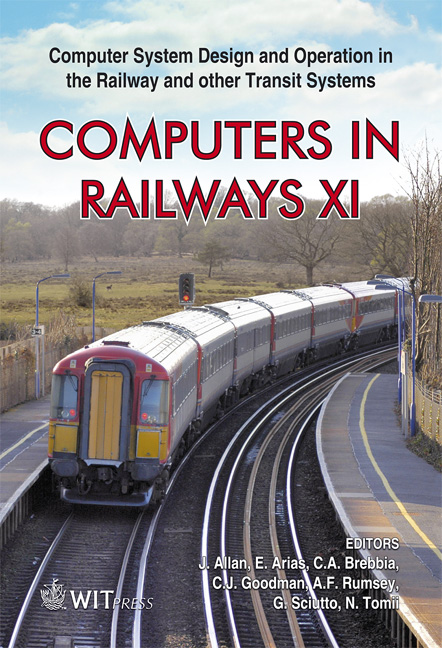A Computer Tool For Automatic Braking Distance Calculation
Price
Free (open access)
Transaction
Volume
103
Pages
10
Page Range
807 - 816
Published
2008
Size
381 kb
Paper DOI
10.2495/CR080781
Copyright
WIT Press
Author(s)
C. Sicre, A. P. Cucala, A. Fernández & L. Cano
Abstract
This paper presents a new algorithm and a procedure for the efficient and accurate calculation of braking distances satisfying current safety Standards. One of these Standards is applied in ADIF (Spanish Railway Infrastructure Administrator), for instance, in the design of signalling systems, to locate signals and balises. Following the Standard, braking distance tables depend on the average gradient along that distance and the speed reduction. In practice, an initial slope is calculated over a forecasted braking distance along the railway track, so that if the corresponding braking distance given by the Standard highly differs from the initial one, it will be necessary to recalculate the average gradient and apply the Standard again. The manual application of this process may end up overestimating braking distances unnecessarily (as the Standard itself includes safety coefficients), falling into additional signalling costs and reducing the line capacity. This paper presents an iterative calculation procedure to adjust as much as possible the distance required by the Standard, so that the average gradient introduced into the Standard corresponds precisely with the braking distance where the average gradient has been computed. Furthermore, the algorithm improves the accuracy of the average gradient calculation, considering the slope transition curves instead of sharp slope vertices. The proposed algorithm has been implemented in a computer tool for its use in railway lines operated by ADIF, according to the braking distance current Standard (N.T.C.020.95). This tool incorporates a railways net model that allows the user to introduce a final braking point, a speed reduction, and provides automatically the kilometric line point where the brake should start. In addition, this tool provides a systematic procedure to obtain braking distances in the different technical departments of ADIF. This paper compares, in real cases, the non-assisted previous procedure with the application of the proposed one, showing the refined braking distances. Keywords: braking distance, N.T.C.020.95, KV, average gradient, signalization.
Keywords
braking distance, N.T.C.020.95, KV, average gradient, signalization.





